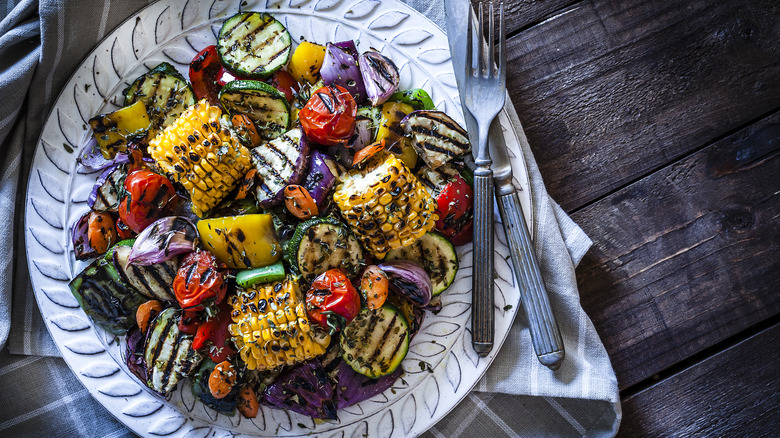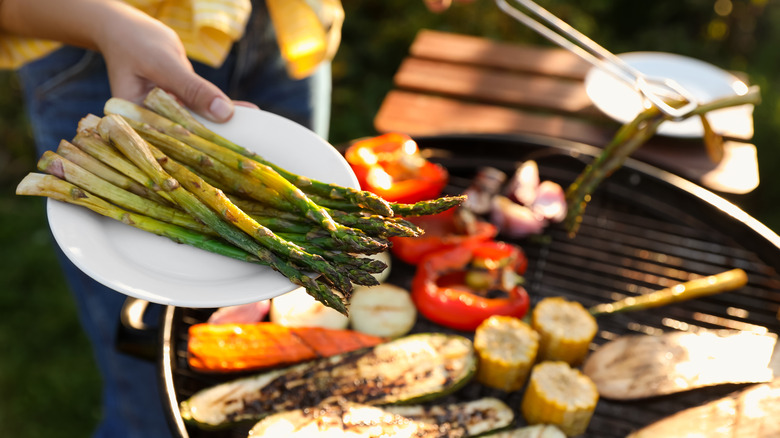The Placement Tip To Keep In Mind When Charring Vegetables On The Grill
Summer is the season for grilling, and not only huge chunks of meat. Hearty plates of barbecued chicken and burgers taste better served with perfectly charred vegetables. When cooked correctly in high, dry heat, veggies release a caramelized sweetness and subtle smokiness, providing a tasty counterpoint to the richness of grilled protein. Knowing when to cook them in direct or indirect heat on the grill is key to coaxing this deliciousness.
As its name implies, direct heat involves cooking food directly over a fire with a temperature range of 450 to 600 degrees Fahrenheit. This leaves a wonderful char on soft and moist produce like eggplants, onions, zucchini, and bell peppers, as well as leafy greens like bok choy and kale, and slender veggies like asparagus, okra, and green beans. One thing to know about grilling vegetables is they cook very quickly. Don't let them sit on the grill for more than 4 minutes per side.
Some vegetables need to be parboiled before you cook them with direct heat, such as hard and fibrous produce like artichokes, carrots, and broccoli. Boil salted water in a pot and put the vegetables in, letting them simmer for 3 to 5 minutes.
Clean and slice your vegetables before putting them on the grill. Cut them into 1/2-inch pieces so they don't fall through the grates. You can also use toothpicks or skewers to pin onion slices together so they don't fall apart.
Indirect grilling works best for heavier vegetables
Large, dense produce like tubers, root vegetables, and winter squash take much longer to cook, so placing them in direct heat will leave you with burnt food. Grill them in indirect heat instead. Similar to baking and roasting, this method uses circulating hot air to cook the vegetables rather than exposure to the fire. Whereas direct heat requires the grill to remain open, you need to close the lid so the heat inside remains steady and the vegetables get cooked thoroughly and evenly. Indirect grilling calls for a temperature range of 350 to 400 degrees Fahrenheit, with cooking time ranging from 40 to 60 minutes.
This method can also be combined with direct heat, especially when you need to keep smaller, thinner veggies warm. If you won't be serving charred bell peppers immediately, for example, remove them from the fire just before they're done and transfer them to the outer edge of the grill. Their internal heat will keep them cooking without getting burned.
To bring out the best of your charred vegetables, coat them with olive oil and a sprinkle of salt and pepper before they hit the grill. You can even soak the dense and starchy ones in a marinade to amp up their flavor. Try olive oil with lemon juice and fresh herbs. You can also add honey so the food gets some photo-worthy grill marks to go with the juicy and delectable sweetness.

